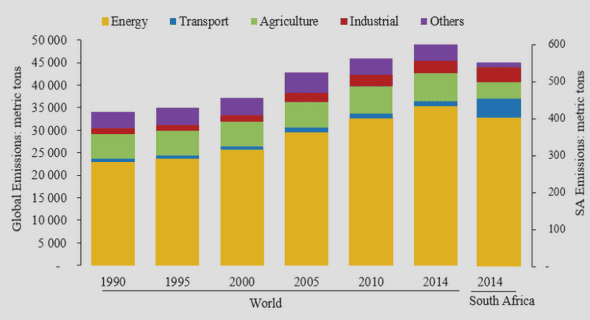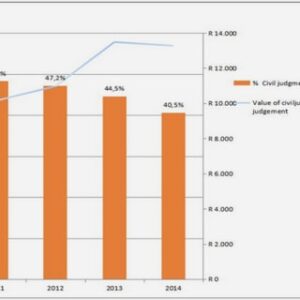(Downloads - 0)
For more info about our services contact : help@bestpfe.com
Table of contents
Introduction
I Measuring with ultra-fast frequency combs
1 The modes and states of a beam of light
1.1 The classical electromagnetic eld
1.1.1 Description of the real electromagnetic eld
1.1.2 Fourier space formalism
1.2 Modal description
1.2.1 Temporal and spectral modes
1.2.2 Spatial modes
1.2.3 Spatio-temporal modes
1.2.4 Basis change
1.2.5 Power and energy
1.3 The quadratures of the classical eld
1.3.1 Quadrature amplitudes
1.3.2 Quadrature uctuations
1.4 Quantization of the eld
1.4.1 Bosonic operators
1.4.2 Modal decomposition
1.4.3 Quadrature operators
1.4.4 Relation to the classical eld
1.5 Quantum states
1.5.1 Density operator
1.5.2 Wigner function
1.6 Gaussian states
1.6.1 Denition and quantum covariance matrix
1.6.2 Examples of Gaussian states
2 Femtosecond ultrafast optics
2.1 Description of pulses of light
2.1.1 Optical frequency combs
2.1.2 Energy and peak power
2.1.3 Moments of the eld
2.1.4 Gaussian pulses
2.2 The inuence of dispersion
2.2.1 Spectral and temporal phases
2.2.2 Eects on the pulse shape
2.3 Representations of the pulse
2.3.1 Time-frequency distributions
2.3.2 Some examples
2.3.3 Experimental realizations
2.4 Generation of pulses of light
2.4.1 Steady-state laser cavity
2.4.2 Mode-locked lasers
3 Revealing the multimode structure
3.1 General experimental scheme
3.1.1 Laser source
3.1.2 Interferometric photodetection
3.1.3 Pulse shaping
3.2 Signal measurement
3.2.1 Modulations of the eld
3.2.2 Data acquisition
3.3 Mode-dependent detection
3.3.1 Quantum derivation
3.3.2 Spectrally-resolved homodyne detection
3.3.3 Temporally-resolved homodyne detection
3.3.4 Addendum: single diode homodyne detection
II Quantum metrology
4 Parameter estimation at the quantum limit
4.1 Projective measurements
4.1.1 Displacements of the eld in specic modes
4.1.2 Sensitivity
4.1.3 The Cramér-Rao bound
4.2 Spectral and temporal displacements
4.2.1 Temporal displacements
4.2.2 Spectral displacements
4.2.3 Conjugated parameters
4.2.4 Application to range-nding
4.3 Space-time coupling: a source of contamination
4.3.1 Transverse displacements
4.3.2 Homodyne contamination
5 Measuring the multimode eld
5.1 Experimental details
5.1.1 Measurement strategy
5.1.2 Phase modulation at high frequencies
5.1.3 Spatial ltering
5.2 Interferometer calibration
5.2.1 Calibration of displacement
5.2.2 Sensitivity measurement
5.3 Multipixel detection
5.3.1 Design and construction
5.3.2 Gain calibration
5.3.3 Space-wavelength mapping
5.3.4 Clearance
5.4 Spectrally-resolved multimode parameter estimation
5.4.1 A glimpse at the multimode structure
5.4.2 Signal extraction
5.4.3 Heterodyne measurements: the need for a stable reference
5.4.4 Space-time positioning
5.4.5 Dispersion
5.4.6 Quantum spectrometer
III Noise analysis of an ultra-fast frequency comb
6 Optical cavities
6.1 Fabry-Perot cavities
6.1.1 Input-output relations
6.1.2 Characteristic quantities
6.1.3 Spatial mode
6.1.4 Noise ltering
6.1.5 Quadrature conversion
6.2 Synchronous cavities
6.2.1 Resonance condition
6.2.2 The cavity’s comb
6.2.3 Simulations
6.3 Experimental realization
6.3.1 Motivations
6.3.2 Design and construction
6.3.3 Cavity lock
6.3.4 Environnemental pressure dependency
6.3.5 Noise properties
7 Experimental study of correlations in spectral noise
7.1 The modal structure of noise
7.1.1 Introduction and motivations
7.1.2 The noise modes
7.2 Measuring spectral correlations in the noise
7.2.1 Classical covariance matrix
7.2.2 Retrieving the uctuations
7.2.3 Experimental scheme
7.3 Experimental results
7.3.1 Amplitude and phase spectral noise
7.3.2 The noise modes
7.3.3 Collective parameters projection
7.3.4 Phase-amplitude correlations
7.3.5 Real-time laser dynamics analysis
IV Going further with quantum frequency combs
8 Multimode squeezed states
8.1 Generating quantum states
8.1.1 Creation of squeezed states
8.1.2 Parametric down conversion with an optical frequency comb
8.1.3 Objectives and perspectives
8.2 Single-pass squeezing
8.2.1 Parametric down conversion
8.2.2 Eigenmodes of the parametric down conversion
8.2.3 Expected eciency
8.3 Second harmonic generation
8.3.1 Eciency
8.3.2 The inuence of temporal chirp
8.4 An ultra-fast squeezer
8.4.1 Pump generation
8.4.2 Synchronously pumped optical parametric amplier
8.5 Perspectives
8.5.1 Quantum enhanced metrology
8.5.2 Entanglement
Conclusion and outlooks
Appendix A Medium dispersion
A.1 Sellmeyer equation
A.2 Wave-vector dispersion
A.3 Application to delay and dispersion estimation
Appendix B Projective measurements by pulse shaping
B.1 Pulse shaping the time-of-ight mode
B.2 Locking on the time-of-ight mode
B.3 Dispersion measurement
Appendix C Experimental construction of the detection modes
Appendix D Conjugated variable of space-time position
D.1 Detection mode for a global displacement
D.2 Detection mode for a spectral displacement
D.3 Conjugated parameter




